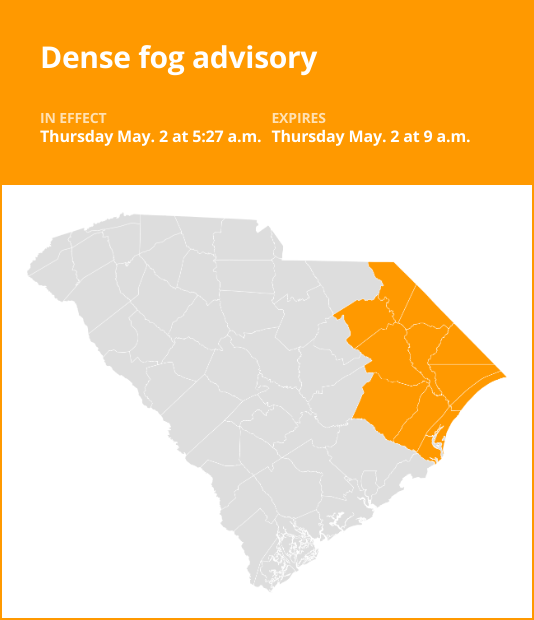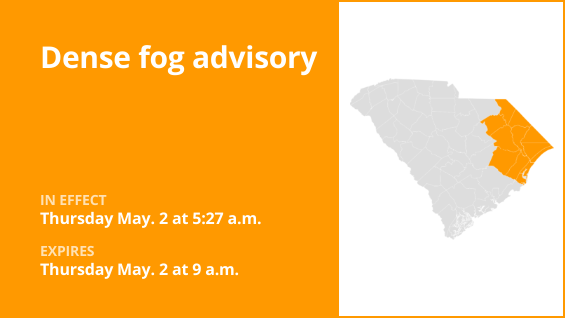An updated dense fog advisory was issued by the National Weather Service on Thursday at 8:40 a.m. in effect until 9 a.m. for Dillon, Florence, Marion, Williamsburg, Horry and Georgetown counties.
“Any lingering fog should quickly dissipate this morning,” says the weather service.
This advisory is in effect until 9 a.m.

Fog safety: Tips from the weather service for safe travels
When a dense fog advisory is issued for your area, it means that widespread dense fog has developed and visibility can plummet to a quarter-mile or less. These conditions pose challenges for travel, so exercise extra caution on the road or consider postponing your trip if possible.
If you must drive in foggy conditions, keep the following safety tips in mind:
Reduce speed:Slow down and allocate extra travel time to reach your destination safely.
Visibility priority:Ensure your vehicle is visible to others by using low-beam headlights, which also activate your taillights. If you have fog lights, use them.
Avoid high-beams:Refrain from using high-beam headlights, as they create glare that impairs your visibility on the road.
Keep a safe distance:Leave a safe distance between you and the vehicle in front of you to account for sudden stops or changes in the traffic pattern.
Stay in your lane:Use the road’s lane markings as a guide to staying in the correct lane.
Zero visibility strategy:In situations of near-zero visibility due to dense fog, activate your hazard lights and seek a secure location, such as a nearby business’s parking lot, to pull over and come to a stop.
Limited parking options:If there is no parking lot or driveway to pull into, pull your vehicle off to the side of the road as far as possible. Once you come to a stop, turn off all lights except your hazard flashing lights, set the emergency brake, and take your foot off of the brake pedal to be sure the tail lights are not illuminated so that other drivers don’t mistakenly run into you.
By adhering to these weather service precautions, you can navigate foggy conditions more safely, reducing the likelihood of accidents and ensuring your personal safety.







